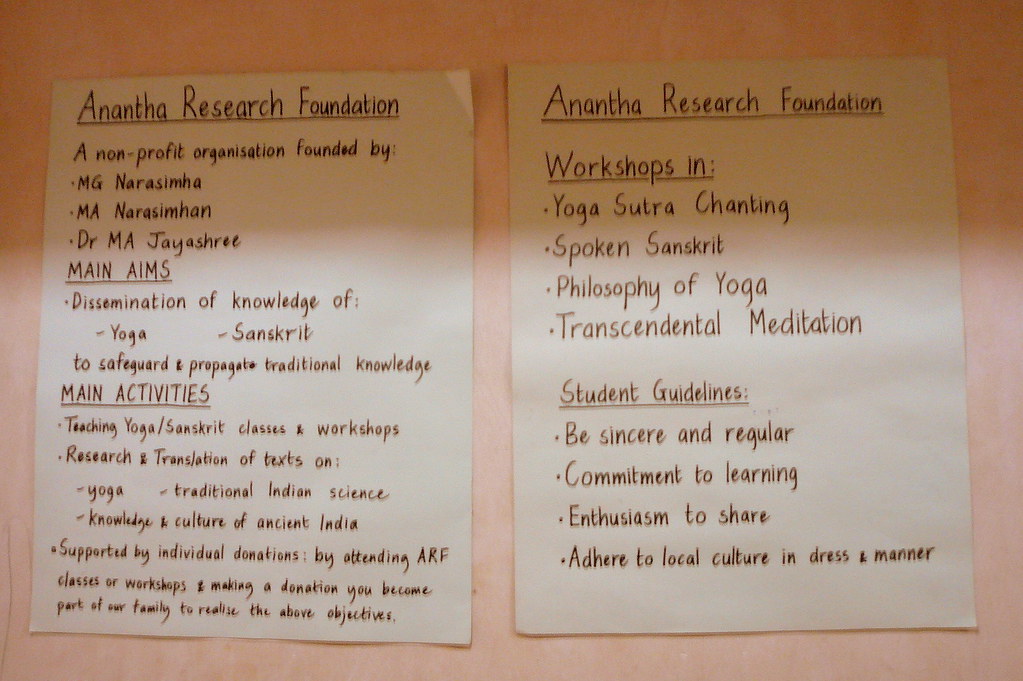So… some strong resonance coming in with this guy, MA Narasimhan. He opens up his office each day from 10-12, plucks in on bare feet in threadbare white cottons and a Brahmin string, and speaks expansively in response to whatever bumbling questions are offered. It makes no sense to morselize the experience because it’s about becoming immersed in an historical Indian perspective on the evolution of consciousness. But then, Narasimhan himself morselizes—from Freud to John Dewey to Joseph Campbell to his teacher Maharishi Maharesh—so here are a few pieces while I have them.
I will not write about the way that he reads my mind, or the way that he answers the question you meant to ask rather than the one you managed to blurt out, or the fact that my inveterate questions suddenly go to seed in that room because my mind sometimes feels so satisfied when he talks. But I will say that this person is a fine scholar—as learned as any great intellectual—whose feel is all heart. The first day he laughed and looked at me and said that the sociologists and the anthropologists will never really change the world because they are trying too hard, because they preach. But the gurus are the ones whose students really believe them—the ones, ironically, whose credibility goes deepest, who change their students most, and thus who make the most difference in the world. Without trying. Just by offering what is asked of them when it is needed.
Anyway, some stuff he’s mentioned in passing, sitting in lotus without leaning forward, lauging easily, gesturing with long thin fingers to enumerate this classification scheme or gesture toward that clarification. ……………………………………………………………………..….
There are four kinds of student, and for them four kinds of teacher. The first kind of student, the artharti, merely wants relief. They are desperate, looking for miracles and proof. Only for this kind of student are so-called miracles (about which he himself remains agnostic) useful. They simply grant relief to doubting, grasping minds. They also facilitate a new belief in the paranormal, which is useful for them later on when they become students of a more advanced type.
There is a constant split and re-split in yoga (and in religions) between the letter and the purport of the law. This is because it’s difficult to retain both the structure and the meaning of practice. In the traditions which hew to the letter of the law, eventually the life is lost. This happened, for example, in Christianity as it excluded mystics.
Siddhis are just a benchmark of your consciousness. They tell you where you are. Keep them a secret because if others learn of them, you will be drained by their need for them. There’s nothing necessarily gratifying in the paranormal—it is immature and often destructive to use the paranormal in this way. All of yoga can take place within the realm of normal consciousness.
Through practice and philosophical study you go from believing that the physical world is what is true and imagination/thought is all false, to believing the exact opposite. So in this way, philosophy is negative—like a photograph’s negative. Eventually in philosophy you never know what is true but it is all good anyway.
Don’t worry about going to a cave to find your meditation. They went to caves because they didn’t have air-conditioner or sound-proofing. It’s much easier now!
Don’t confuse Vedanta and Patanjali yoga. Both are covering the same territory, but from different directions. Vedanta doesn’t care about dharana-dhyana-samadhi because from the top looking down all states are disturbances. Vedanta is view; Patanjali yoga is the path. From the perspective of the latter, dharana-dhyana-samadhi are practical steps. (So nice to hear the notion of ascending and descending spirituality articulated in this way by an Indian philosopher. Patanjali yoga and Vedanta are not contradictory. Rather, they’re just very different perspectives on the same concerns.)
In the past, gurus did not accept students easily because they believed that once they entered into a relationship with a student, they were bound to them for as many lifetimes as it took for the student to progress. So if the student was lazy and fell away from practice, the teacher had to work with them to re-institute the practice again and again in subsequent incarnations. Now teachers do not fear this. Gurus’ work now is to be tour-guides.
A compassionate teacher knows when to tell a student to leave. When a student is not progressing because she is so attached, when she is not realizing her own self-responsibility, then she is stuck. To accept the student’s anger at being released is something that a good teacher can do. A selfish teacher will do the opposite—facilitate students’ neediness and attachment.
Traditionally, one needed a teacher for three services: to create a desire to evolve, to destroy obstactles of fear and doubt, and to sustain the student on the path. If you could find a teacher could be the creator, destroyer and sustainer all in one, it was great, although you could get each of these ingredients from different teachers. Now it’s not on this model. We don’t have a single teacher to fill every need. Instead of gurus there is only the passing state and role of gurudom.


26 Comments